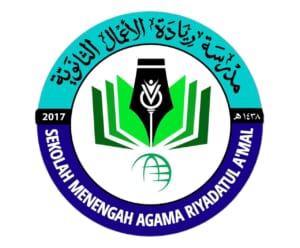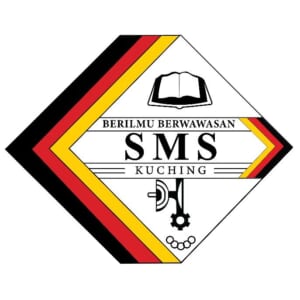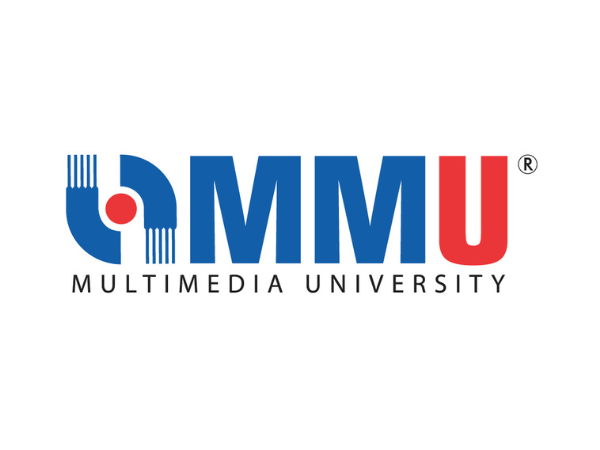
Science Castle Malaysia 2025
Castle of Discovery, Where Local Sparks Build Global Marks! Makeramai Makerspaceご挨拶
After its last appearance in Malaysia in 2019, Science Castle in Malaysia is making an exciting comeback in 2025, and this time, we are heading to Sarawak! This much-anticipated return offers an incredible opportunity for high school students, especially those in Sarawak, to join this unique platform and showcase their research talents.
We believe it’s time to provide Sarawak’s young scientists with the chance to experience and benefit from this impactful event. But don’t worry—schools from Peninsular Malaysia and even outside Malaysia are also warmly invited to participate.
Let’s come together to explore the stunning natural beauty of Sarawak while diving deep into the fascinating world of science and technology. We can’t wait to see the incredible ideas and innovations that will emerge from this enriching experience.
開催概要
- 大会名
- Science Castle Malaysia 2025
- 日時
- 2025年7月31日(木)08:30~18:00
- 演題申請
- 会場
-
Makeramai Makerspace
Plaza Merdeka, Level 4, Pearl Street, 93000 Kuching, Sarawak ACCESS - 主催
- Leave a Nest Malaysia Sdn. Bhd.
- 参加費
- There is no fee to join the conference. However, participating schools are responsible for covering all transportation and accommodation costs for their attendees.
- 参加対象者
- High school students from across Malaysia who are conducting exciting and innovative research in the field of Nature, Engineering, Science and Technology (NEST).
タイムテーブル
| 31 July 2025 | |||||
| TIME | AGENDA | ||||
| START | END | Ranyai Ballroom – The Waterfront Hotel | Makeramai Makerspace (Foyer) |
Makeramai Makerspace (Balai Rong) |
Makeramai Makerspace (Workshop – Kausit) |
| 0800 | 0830 | Poster setup (Odd Number) | Registration & Poster setup (Even Number) | ||
| 0830 | 0840 | Opening Remark |
Partner booth exhibition
1. Ajinomoto (Malaysia) Berhad 2. Multimedia University (MMU) |
||
| 0840 | 0850 | Welcoming Remark | |||
| 0850 | 0910 | Opening Ceremony (Officiating, Cultural Performance & Photo Session) |
|||
| 0910 | 0920 | Keynote Address | |||
| 0920 | 0930 | Short Break & VIP visiting poster presentation and partner booth | |||
| 0930 | 1030 | Oral Presentation (Theme: Nature (N) & Science (S)) – 4 teams |
Partner booth exhibition
1. Ajinomoto (Malaysia) Berhad 2. Multimedia University (MMU) |
Teacher Workshop
|
|
| 1030 | 1040 | Short Break & Student Movement to Workshop 1 | |||
| 1040 | 1140 | Oral Presentation (Theme: Engineering (E) & Technology (T)) – 4 teams |
Workshop 1
Innoqua Asia Sdn. Bhd. (1100 – 1300) |
||
| 1140 | 1150 | Short Break | |||
| 1150 | 1300 | Splash Presentation (90 sec pitch) Top 20 poster |
|||
| 1300 | 1400 | Lunch | |||
| 1400 | 1500 | Poster Core time (Odd Number) | Partner booth exhibition |
Workshop session 2
Sustainable Food Asia Sdn. Bhd. (for visitor) (2 pm – 4 pm) |
Teacher Workshop
|
| 1500 | 1600 | Preparation for Closing Ceremony | Partner booth exhibition & Poster Core time (Even Number) |
||
| 1600 | 1730 | Closing Ceremony | |||
| 1730 | 1800 | Cleaning and rearrangement | |||
口頭発表演題
-
O1
MY (Sabah)
 (SM Visi Sandakan)
(SM Visi Sandakan)Ethnobiological Knowledge, Bioactive Potential, and Culinary Applications of Melo melo (Indian Volute) in Sabah
MOREMelo melo (Indian Volute) is a large marine gastropod commonly found along the coast of Sabah. Traditionally, it has been valued not only as a culinary delicacy but also for its perceived medicinal benefits. Despite its widespread use, Melo melo remains largely unexplored in modern scientific literature. This research aims to bridge the gap between indigenous knowledge and scientific validation by exploring three key aspects: its ethnobiological significance, bioactive potential, and culinary application—particularly its role as a natural umami enhancer. Through interviews with local communities, we documented traditional beliefs and uses of Melo melo. Concurrently, laboratory analyses are being conducted to evaluate its antimicrobial properties, and to identify potential bioactive compounds in its mucus. The findings may open doors to new applications in food technology, healthcare, and marine biotechnology. -
O2
MY (Kuala Lumpur)
 (Sekolah Menengah Agama Riyadatul A'mal (SMART Al Amin))
(Sekolah Menengah Agama Riyadatul A'mal (SMART Al Amin))Upcycling food waste and expired seasoning using Black Soldier Fly (BSF)
MOREMalaysians produces 17k tonnes food waste daily. Our team would like to research the use of BSF to upcycle food and seasonings waste, in a sustainable manner. This research is aligned with Ajinomoto's sustainability goals; to reduce environmental impact and regeneration of the environment in food losses, by optimizing food usage and reduce food disposal while minimizing impact to the environment -
O3
MY (Sarawak)
 (Yayasan Sarawak International Secondary School Petra Jaya)
(Yayasan Sarawak International Secondary School Petra Jaya)MSG Algae-Pack: The Next-Gen Biodegradable Solution for Food Industries
MOREThis study investigates the enhancement of algae-based biopolymers through the incorporation of monosodium glutamate (MSG) to improve their mechanical properties, flexibility, and moisture resistance for food packaging applications. The research evaluates the biodegradability, environmental impact, and industrial feasibility of the modified biopolymers, ensuring that improved material performance aligns with sustainability goals. By optimizing the functional properties of biodegradable alternatives, this study contributes to the advancement of eco-friendly food packaging solutions, offering a promising approach to reducing plastic waste while maintaining product integrity. -
O4
MY (Sarawak)
 (SK Gita)
(SK Gita)Eco-Friendly Bird Repellent Using Spicy Aroma: A Case Study at 6 Arif Corridor
MOREBirds often rest at the 6 Arif corridor and leave droppings that make the area dirty, smelly, and uncomfortable for students. To solve this problem in a safe and eco-friendly way, we tried using red chilies, which have a strong spicy smell that birds dislike. We placed chopped red chilies in containers and hung them at the corridor and in front of the classroom door. We observed the area for two weeks and recorded the number of birds, the amount of droppings, and the smell condition. The results showed fewer birds came, and the corridor became cleaner with less smell. This project shows that red chilies can be a simple and effective bird repellent. It helped us learn how to solve real problems using natural and creative ideas. -
O5
MY (Sarawak)
 (SM Sains Kuching)
(SM Sains Kuching)Purifying of Grey Water Using Mimosa Pigra (POGWUMP)
MOREThe purpose of our research is to breath new life into an invasive plant species (Mimosa pigra) by reworking it into a grey water filter and to determine the viability of this concept. Our hypothesis is that Mimosa pigra can become an effective grey water filter, making it more eco - friendly compared to alternative solutions. Our own research is still underway but already established research papers have provided proof that tannins extracted from mimosa pigra have coagulating effects on contaminated water, providing us with a solid ground to use this concept in our grey water filtration device. The most important aspect of this research is validating the dual functionality of our project which is to find a new purpose for an invasive plant species and to create a a water filtration device which produces biodegradable and compostable byproducts, ( the leftover mimosa pigra after use in water filtration). -
O6
MY (Sarawak)
 (SMK Lingga)
(SMK Lingga)TEBU-LITE Board: Lightweight Eco-Friendly Composite Board from Sugarcane Bagasse for Mini Furniture Applications
MOREThis project aims to develop a lightweight and eco-friendly composite board made from sugarcane bagasse, named TEBU-LITE Board, for application in mini furniture manufacturing. The hypothesis suggests that processed sugarcane bagasse, combined with natural binding agents, can produce a board with sufficient strength for light-duty use. The project involves drying, grinding, and compressing the bagasse with natural resin. Preliminary results indicate that TEBU-LITE Board has the potential to replace wood-based materials in small-scale products while being more environmentally sustainable. We hope this product can serve as a sustainable alternative in the furniture industry and contribute to reducing agricultural waste. -
O7
MY (Sarawak)
 (SMK Sacred Heart)
(SMK Sacred Heart)Flood-Res
MOREWe are developing a flood risk prediction website that calculates flood probability based on real-time data and displays it with clear information: date, risk percentage, risk level, and prediction. After that, we will send a mobile notifications to make a real-time early warning system. Our hypothesis is that earlier warnings can significantly reduce flood damage, economic loss, and casualties. We had done the first stage to predict the probability we intend to make the warning system later on. -
O8
MY (Sarawak)
 (Independent)
(Independent)Nature Whisper
MORENature Whisper is an AI-powered system designed to detect hornbill calls using machine learning and mobile technology, supporting wildlife conservation efforts. We hypothesised that acoustic detection could offer a more practical and cost-effective alternative to traditional visual tracking methods. Using Teachable Machine, we trained a model on hornbill audio samples and integrated it into a mobile app built with MIT App Inventor. Initial testing showed accurate real-time detection, with data automatically logged to Google Sheets for further analysis. Future plans include expanding to other species and deploying the system in rural areas using ESP-32 and LoRaWAN.
ポスター発表
パートナー企業
Endorsed by
-

Ministry of Education, Innovation and Talent Development Sarawak
Co-organizer
-

Sarawak Digital Economy Corporation Berhad
Main Partner
-

Ajinomoto (Malaysia) Berhad
Supporting Partner
-

Malaysia Digital Economy Corporation (MDEC) -

Innoqua -

Sustainable Food Asia
Ecosystem Partner
-

Multimedia University -

Tabung Ekonomi Gagasan Anak Sarawak (TEGAS) -

Business Events Sarawak
Media Partner
-

Borneo Digital
Venue Partner
-

The Waterfront Hotel
